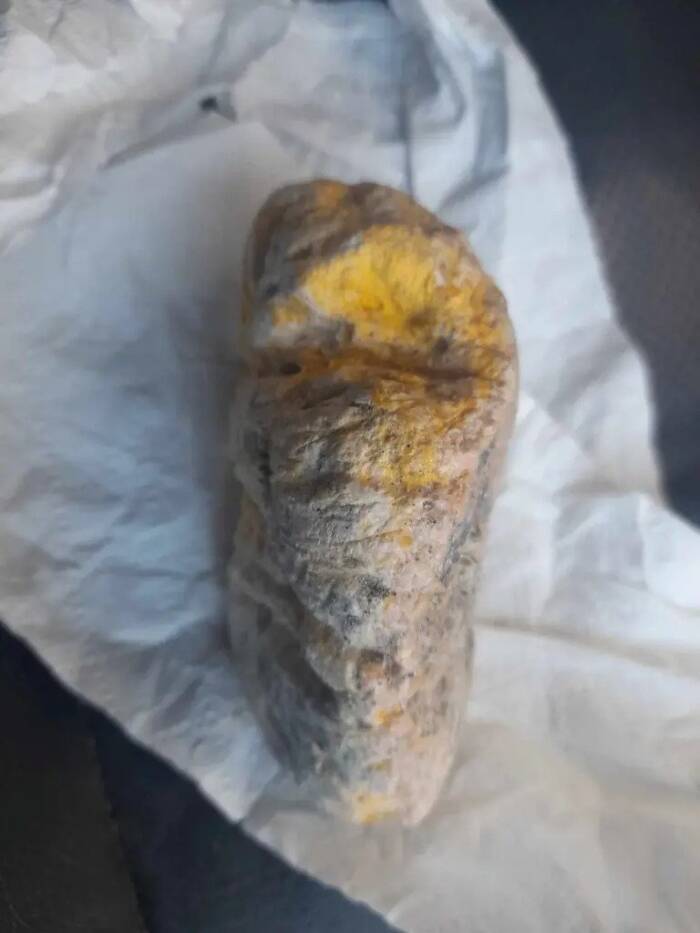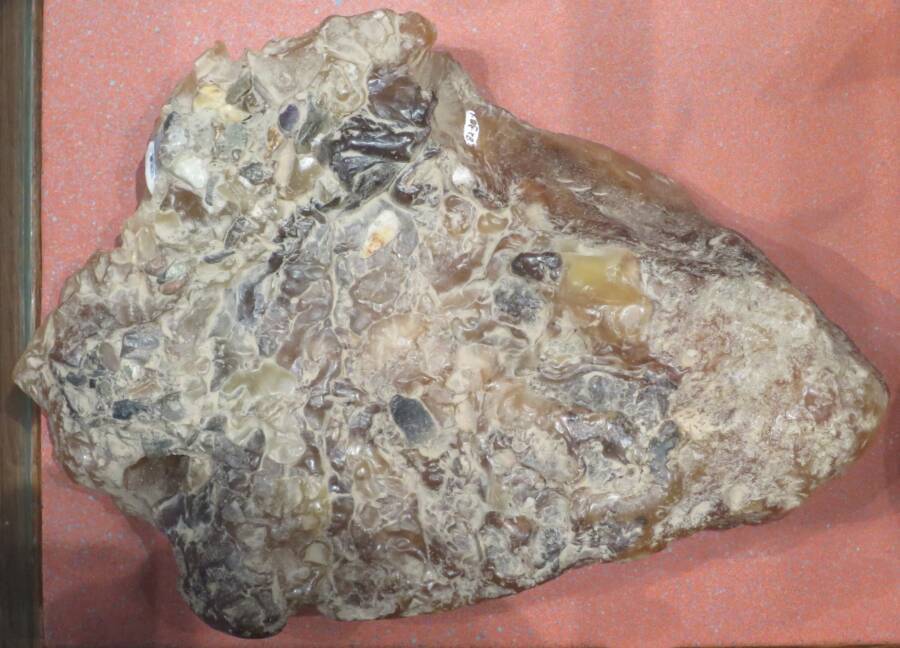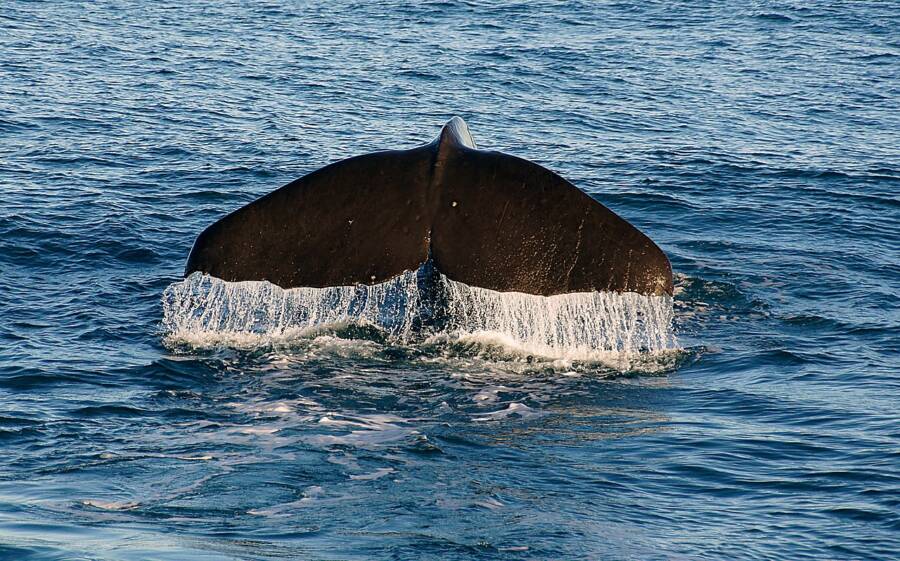Ambergris, sometimes called "whale vomit," is used in expensive perfumes to make scents stick on the skin.

Patrick WilliamsonThe object hasn’t yet been tested, but appears to be ambergris.
Patrick Williamson was walking along the beach in Ayrshire, Scotland when his dog suddenly dropped her ball and made a beeline for a strange rock sitting atop some seaweed. Williamson went to investigate the greyish-yellow object and concluded that it was ambergris — known as whale vomit — a rare substance that can fetch exorbitant prices.
“I work on a fishing boat, so I knew what ambergris was. I’ve never seen it before, but I’ve heard stories about it,” Williamson said according to the New York Post. “I was walking along Irvine Beach with the dog. I clocked something on the seaweed, and the dog ran over to it and dropped her ball. She doesn’t usually drop her ball, so I knew there was something there.”
Williamson picked up the rock-like object, which weighed about 5.5 ounces. Though he hasn’t yet had the it professionally tested, Williamson believes that it’s a small piece of ambergris, a waxy substance found in the guts of sperm whales which is sometimes referred to as “floating gold.”

Wmpearl/Wikimedia CommonsAmbergris on display at Alaska’s Skagway Museum.
Indeed, ambergris can fetch eye-watering prices when found. Small chunks of it can sell for tens of thousands of dollars, and a group of Yemeni fisherman sold a 280-pound chunk of ambergris — which they found in the stomach of a dead whale — for whooping $1.5 million in 2021.
That’s because ambergris is a coveted ingredient used by high-end perfume makers. National Geographic reports that perfume makers like Chanel and Lanvin use ambergris because of how it adheres a scent to the skin.
But though ambergris is used to make pleasant perfumes, its origins are decidedly less delicate. Ambergris comes from the gut of sperm whales.

Bernard Spragg/Wikimedia CommonsAmbergris comes from the guts of sperm whales, but scientists don’t understand every step of the process.
Scientists don’t understand everything about ambergris, but it appears that it’s made when sperm whales eat squids. Since whales can’t digest the squids’ beaks, they usually vomit them up. But sometimes, the beaks make it into the whale’s intestines, which triggers the ambergris process.
“As a growing mass, [the beaks] are pushed farther along the intestines and become a tangled indigestible solid, saturated with feces, which begins to obstruct the rectum,” author Christopher Kemp explained in his book Floating Gold: A Natural (and Unnatural) History of Ambergris.
“[G]radually the feces saturating the compacted mass of squid beaks becomes like cement, binding the slurry together permanently.”
Ambergris is often referred to as “whale vomit,” but scientists think that it’s probably fecal matter. Some whales might be able to pass the ambergris slurry and swim away, but others die after the obstruction ruptures their rectums. Then, the ambergris makes its way onto the beach.
Williamson believes that he’s found such a chunk, but he hasn’t yet confirmed the find. One way to determine if something is ambergris or rock is to heat a needle and press it to the surface, since ambergris will quickly melt. Williamson says he has done this, but he plans to have the object professionally checked out to see if it’s truly ambergris or not.
“We’ve tested it with a hot needle, and it was doing the exact same thing that ambergris would,” he explained. “People have been saying that I can take it to Glasgow University, and they’ll test it – so I’ll be doing that on my next day off.”
In the meantime, Williamson and his dog will keep their eyes out for chunks of strange rock on the beach. After all, ambergris can be an extremely lucrative discovery for anyone who stumbles across it.
“I’m on the beaches all the time,” Williamson said. “I take my dog with me wherever I go, so we’ll be looking every time we land now.”
After reading about how a Scotsman and his dog allegedly discovered a chunk of ambergris, or whale vomit, while walking on the beach, discover the bizarre story of Oregon’s exploding whale. Or, see how a beachcomber in Maryland stumbled across a 12-million-year-old whale skull.





